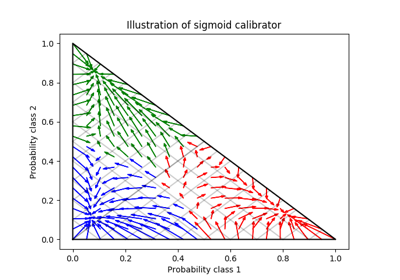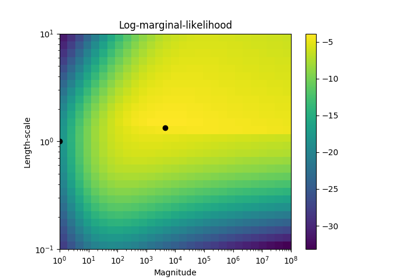sklearn.metrics.log_loss¶
-
sklearn.metrics.log_loss(y_true, y_pred, eps=1e-15, normalize=True, sample_weight=None, labels=None)[source]¶ Log loss, aka logistic loss or cross-entropy loss.
This is the loss function used in (multinomial) logistic regression and extensions of it such as neural networks, defined as the negative log-likelihood of the true labels given a probabilistic classifier’s predictions. The log loss is only defined for two or more labels. For a single sample with true label yt in {0,1} and estimated probability yp that yt = 1, the log loss is
-log P(yt|yp) = -(yt log(yp) + (1 - yt) log(1 - yp))Read more in the User Guide.
Parameters: - y_true : array-like or label indicator matrix
Ground truth (correct) labels for n_samples samples.
- y_pred : array-like of float, shape = (n_samples, n_classes) or (n_samples,)
Predicted probabilities, as returned by a classifier’s predict_proba method. If
y_pred.shape = (n_samples,)the probabilities provided are assumed to be that of the positive class. The labels iny_predare assumed to be ordered alphabetically, as done bypreprocessing.LabelBinarizer.- eps : float
Log loss is undefined for p=0 or p=1, so probabilities are clipped to max(eps, min(1 - eps, p)).
- normalize : bool, optional (default=True)
If true, return the mean loss per sample. Otherwise, return the sum of the per-sample losses.
- sample_weight : array-like of shape = [n_samples], optional
Sample weights.
- labels : array-like, optional (default=None)
If not provided, labels will be inferred from y_true. If
labelsisNoneandy_predhas shape (n_samples,) the labels are assumed to be binary and are inferred fromy_true. .. versionadded:: 0.18
Returns: - loss : float
Notes
The logarithm used is the natural logarithm (base-e).
References
C.M. Bishop (2006). Pattern Recognition and Machine Learning. Springer, p. 209.
Examples
>>> log_loss(["spam", "ham", "ham", "spam"], # doctest: +ELLIPSIS ... [[.1, .9], [.9, .1], [.8, .2], [.35, .65]]) 0.21616...



